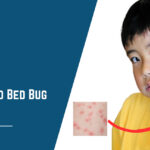
Tick-Borne Diseases
As we step into the great outdoors, embracing the beauty and adventure it offers, we must also be mindful of the tiny terrors hidden in the shadows – ticks. Beyond being mere hitchhikers, these eight-legged creatures come with a baggage of potential diseases, making their bites more than just an irritating inconvenience.
Let’s explore the major tick-borne diseases you might encounter, uncovering the details of each one.
What are the major tick-borne diseases?
Anaplasmosis
Anaplasmosis, like a sneaky intruder, enters the body through tick bites.
Major Symptoms of Anaplasmosis
Picture this bacterial menace as a stealthy invader, causing symptoms such as fever, chills, muscle aches, fatigue, and sometimes even nausea and vomiting. Anaplasmosis, a tick-borne disease transmitted through tick bites, can sneak into your system, demanding attention and vigilance in the face of its subtle onset.
Babesiosis
Solving this complex puzzle demands a sharp awareness of various symptoms, emphasizing the complexity of diseases transmitted by ticks.
Major Symptoms of Babesiosis
Enter the parasitic challenge of Babesiosis, where the consequences extend beyond the initial encounter. This disease brings forth fever, fatigue, hemolytic anemia (the breakdown of red blood cells), jaundice, and dark urine. Unveiling itself through various symptoms, Babesiosis serves as a reminder of the intricate web of complications woven by tick-borne diseases.
Borrelia miyamotoi disease
Borrelia Miyamotoi Disease emerges as an enigma in Lyme’s clothing, mimicking the symptoms of its more well-known counterpart.
Major Symptoms of Borrelia miyamotoi disease
Meet the Lyme-like enigma, Borrelia Miyamotoi Disease, a relatively new addition to the roster of tick-borne diseases. Mimicking the symptoms of Lyme disease, introduces fever, chills, muscle aches, and fatigue into the equation. As we navigate the outdoors, awareness of this emerging threat becomes crucial for a comprehensive defense.
Rocky Mountain spotted fever (Rickettsia rickettsii)
In the list of tick-borne diseases, Rocky Mountain Spotted Fever takes center stage.
Major Symptoms of Rocky Mountain spotted fever
On the stage of tick-borne ailments, Rocky Mountain Spotted Fever emerges, showcasing a cascade of symptoms. This bacterial infection brings forth high fever, rash, headache, muscle aches, and sometimes even vomiting and diarrhea. Its diverse manifestations highlight the complexity of diseases lurking within these minuscule assailants.
Powassan virus
Within the realm of tick-borne diseases, the Powassan Virus stands as a rare yet grave adversary.
Major Symptoms of Powassan virus
In the realm of tick-borne dangers, the Powassan Virus stands as a rare but grave threat. Its potential for fatality cannot be understated, as it introduces symptoms like fever, headache, vomiting, confusion, and seizures. This virus is a stark reminder that even the smallest creatures can wield significant peril.
Tularemia
Tularemia appears like a bacterial chameleon, showing up in different forms.
Major Symptoms of Tularemia
Lastly, the multi-faceted tick-borne disease known as Tularemia presents itself in several forms. Symptoms range from fever, chills, and muscle aches to skin ulcers, swollen lymph nodes, and even pneumonia. Tularemia’s ability to manifest in diverse ways emphasizes the need for a vigilant stance against the spectrum of tick-borne threats.
What are other tick-borne diseases?
Some of the other tick-borne diseases are as follows:
- Tickborne Relapsing Fever (TBRF)
- Hard Tick Relapsing Fever
- Tick ID
- Overview of Tickborne Diseases
- Lyme Disease
How to keep your space tick-free to avoid tick-borne diseases?
Keep Ticks Out of Your House
Ensure that your house is a tick-free zone. Close up any openings around doors, windows, and plumbing with weather stripping. Ticks won’t be able to enter and cause problems in this manner.
Maintain Order
Clean your living area regularly. In the areas where your pets like to hang out, vacuum the carpets, rugs, and furniture. To get rid of ticks and their eggs, wash your linens and the bedding on your dogs in hot water.
Declutter your space
Ticks enjoy hiding in cluttered areas, so get rid of the clutter. Declutter your space by getting rid of items you don’t need. This keeps your house clean and makes ticks unwanted.
Organize Your Yard
Ticks, particularly those in your yard, like areas with tall grass and shade. Mow your grass, trim your bushes, and rake leaves to keep things tidy. Ticks will have a tougher time setting up shop in your outside area as a result.
Plant Tick-Repellent Plants
Line the boundaries of your yard with some lavender, peppermint, or rosemary plants. These not only have a pleasant scent but also naturally repel ticks, making your outside area safer.
Keep potential tick hosts away
Prevent vermin and deer from introducing ticks into your yard. To make your area less appealing to them, use natural repellents and seal up any openings where they could enter. This reduces the likelihood that ticks will cause tick-borne diseases in your house.
You may also like:
FAQs
What are the most common tick-borne diseases in Canada?
Where in Canada are ticks and tick-borne diseases most prevalent?
What are the symptoms of tick-borne diseases?
How can I prevent tick bites in Canada?
When should I see a doctor after a tick bite?
Is there a vaccine for any tick-borne diseases in Canada?
Where can I get more information about tick-borne diseases in Canada?
Conclusion
Ticks not only are a nuisance to us because they bite and are almost impossible to spot, but they are a bringer of diseases. This is why we need to keep our space tick-free for us and our furry friends. Always be wary of how overlooking ticks can affect your life. And don’t forget to share this with your loved ones so they can be aware of this too!


